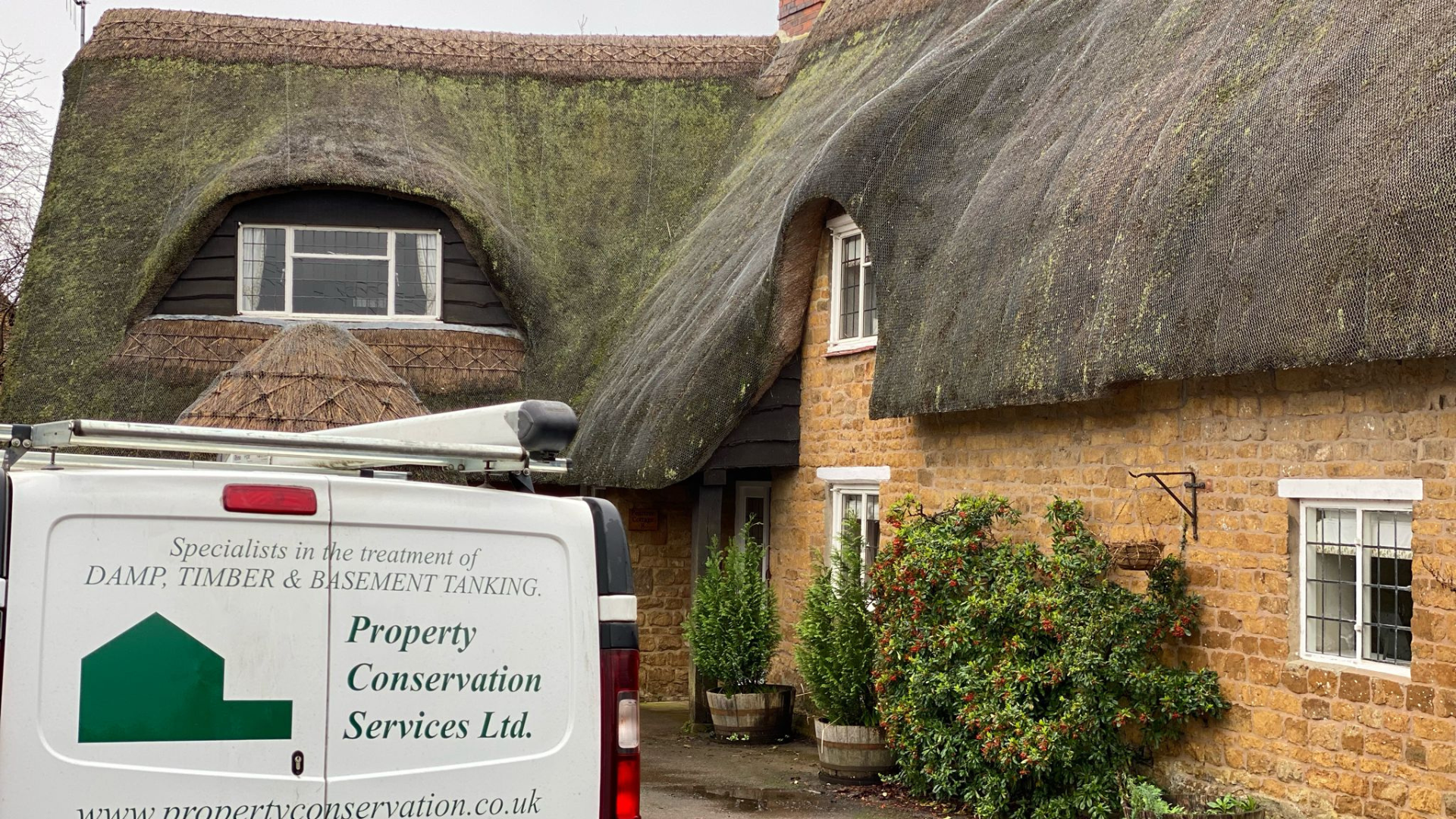Thatched cottages are charming and traditional dwellings, and here in the county of Oxfordshire are plenty, thanks to our many Cotswold villages. However, beneath their rustic appeal lies a potential threat: roof timber infestation by woodworm. These tiny larvae of wood boring insects can wreak havoc on the structural integrity of these vulnerable homes if left unchecked. Here’s how to spot woodworm in thatched cottages and how we effectively treat it.
Understanding woodworm species
Woodworm is the common phrase used to describe two species of wood boring insect.
- Common Furniture Beetle (Anobium Punctatum): This is the most common wood boring insect found in thatched cottages. Its larvae tunnel through wood, causing structural damage over time.
- Deathwatch Beetle (Xestobium Rufovillosum): While less common, the Deathwatch beetle poses a serious threat to older structures. Its distinctive tapping sound, preference for damp wood and larger emergence holes make it easy to spot.
Identifying woodworm infestation
- Visible holes and dust: Keep an eye out for tiny round ‘flight’ or ‘emergence’ holes in wooden roof trusses and support beams. They are often accompanied by powdery wood dust (frass) and are tell-tale signs of woodworm activity
- Weak or crumbling wood: Touch the wooden beams beneath your thatched roof and stored furniture. If they feel weak or show signs of crumbling, it could indicate underlying woodworm damage.
- Presence of adult beetles: Adult beetles emerging from holes in wood are a clear indication of an active woodworm infestation and may be seen around windows and on the sills.
- Audible signs: In severe cases, you might hear faint tapping sounds within the wood, particularly at night. This could signify the presence of Deathwatch beetles, notorious for their audible mating calls.
Treatment methods
- Timber treatment solutions: Once woodworm infestation is confirmed by a professional timber treatment company, prompt action is crucial. Treatment solutions such as insecticidal sprays and injectable creams can effectively eliminate woodworm larvae and prevent further damage.
- Fumigation: In the worst case scenario, fumigation might be necessary to reach larvae deeply embedded within the wood.
- Replacement of infested wood: Severely damaged wood might require replacement to ensure the structural integrity of the thatched cottage. However, this should be done with caution, preserving the authentic character of the building and within the guidelines of any listed status.
- Preventive measures: To safeguard against future infestations, owners of thatched cottages could consider applying wood preservatives and maintaining proper ventilation to minimise dampness and deter wood-boring insects.
Vigilance is key when it comes to protecting thatched cottages from woodworm infestation. By familiarising yourself with the signs of infestation and implementing appropriate treatment measures, you can preserve the timeless beauty and structural integrity of your cherished home for generations to come.

